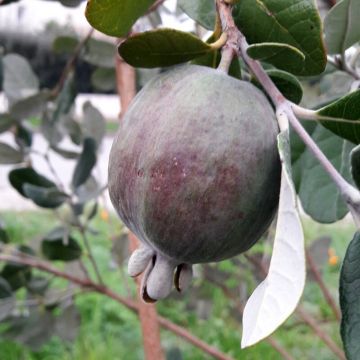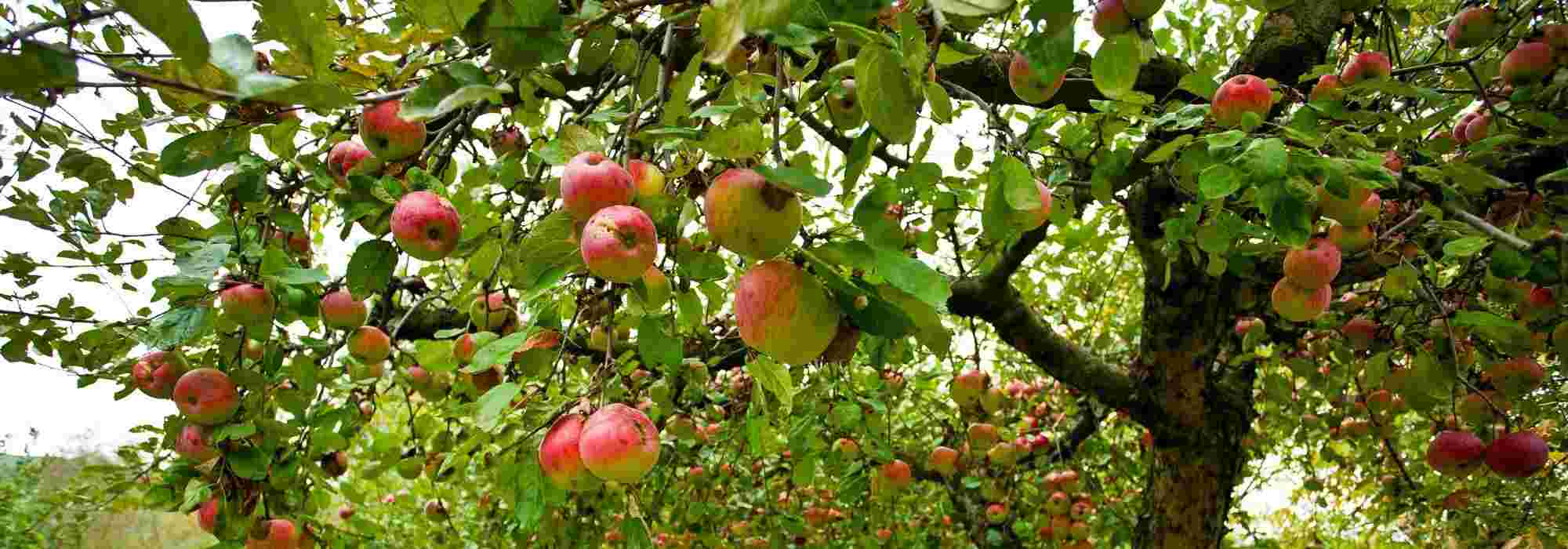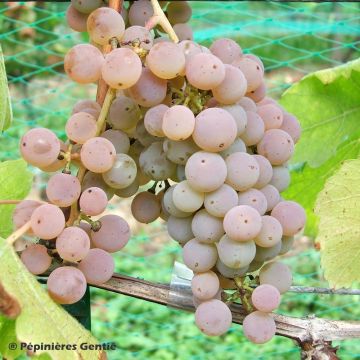

Feijoa sellowiana Coolidge
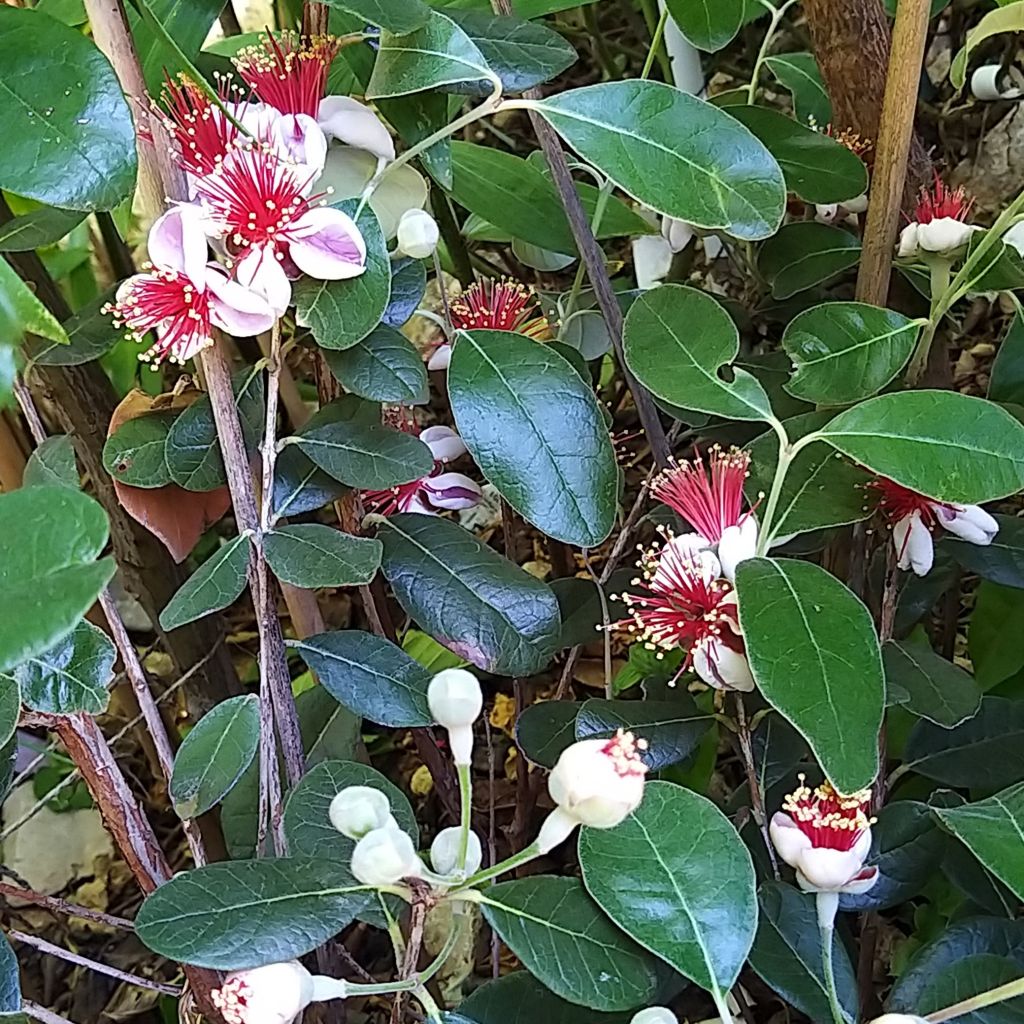

Feijoa sellowiana Coolidge
View more pictures
Hide images

Thierry P.

May flowering - image 6 - Buds and flowers.
Thierry P. • 84 FR
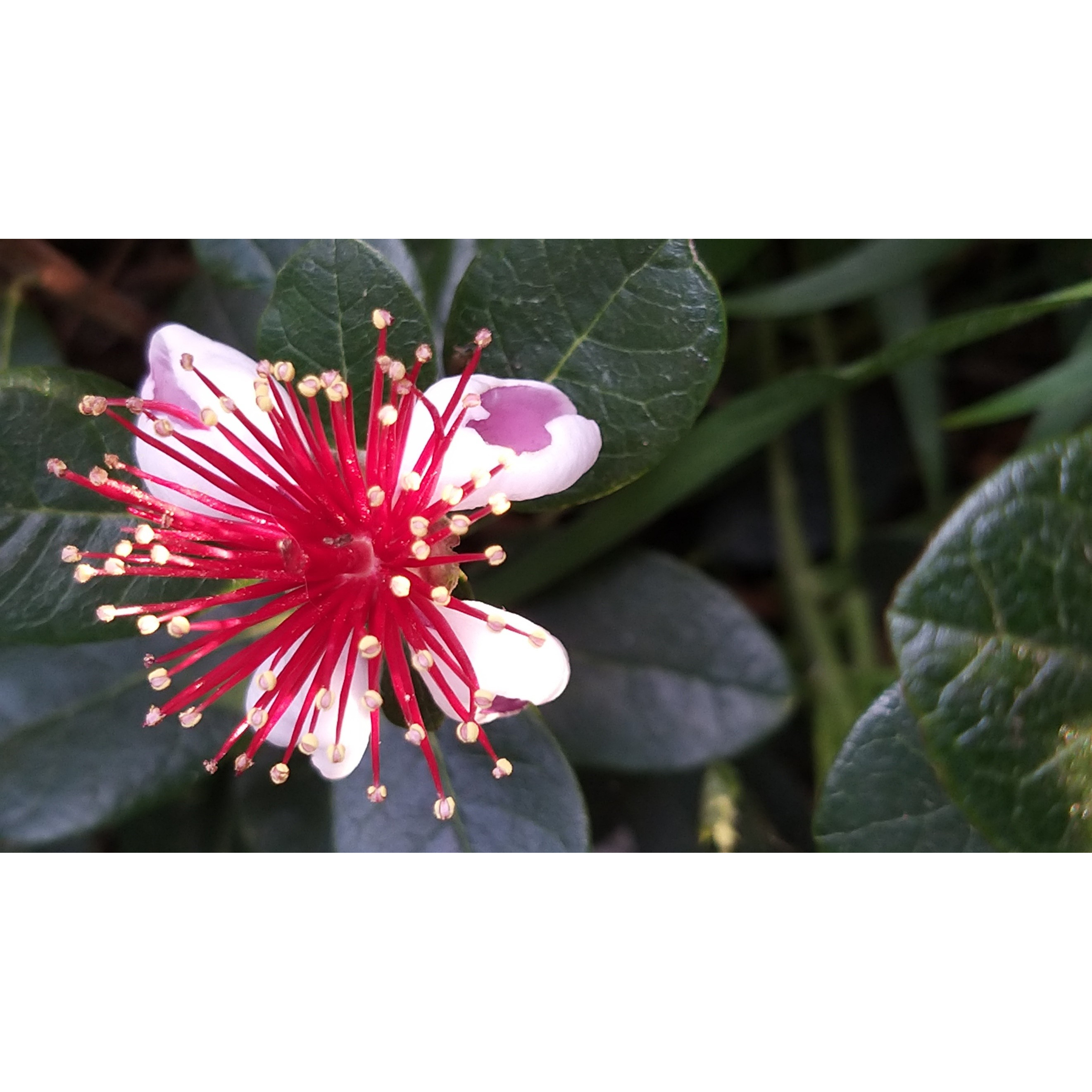
Thierry P.

June flowering - image 5
Thierry P. • 84 FR

Thierry P.

June flowering - image 3
Thierry P. • 84 FR

Thierry P.

June flowering - image 4
Thierry P. • 84 FR

Thierry P.

June flowering - image 2
Thierry P. • 84 FR

Thierry P.

Flowering in June - image 1
Thierry P. • 84 FR
Feijoa sellowiana Coolidge
Feijoa sellowiana Coolidge
Pineapple Guava, Guavasteen
Well developed. Flowered beautifully. A very lovely plant.
Chantal, 20/07/2025
Special offer!
Receive a €20 voucher for any order over €90 (excluding delivery costs, credit notes, and plastic-free options)!
1- Add your favorite plants to your cart.
2- Once you have reached €90, confirm your order (you can even choose the delivery date!).
3- As soon as your order is shipped, you will receive an email containing your voucher code, valid for 3 months (90 days).
Your voucher is unique and can only be used once, for any order with a minimum value of €20, excluding delivery costs.
Can be combined with other current offers, non-divisible and non-refundable.
Home or relay delivery (depending on size and destination)
Schedule delivery date,
and select date in basket
This plant carries a 6 months recovery warranty
More information
We guarantee the quality of our plants for a full growing cycle, and will replace at our expense any plant that fails to recover under normal climatic and planting conditions.

Description
The Brazilian Guava or Feijoa sellowiana 'Coolidge' is a beautiful tree, a true wonder for mild climates. It can be grown in the same zone as the kiwi and it offers a beautiful mahogany bark, very beautiful evergreen foliage with shiny green almond reverse, edible flowers and delicious green fruits of good size, whose aroma evokes pineapple, guava, and strawberry. This self-fertile variety bears fruit without a partner, but will be more productive if the tree is planted near another subject. Its cultivation in full sun and favourable climate presents no difficulty: it tolerates a wide range of soils and withstands heat and drought well, which will however harm the quality and abundance of the harvest.
The Acca sellowiana, also called Montevideo Guava or Feijoa, is an evergreen tree belonging to the myrtle family, just like Eucalyptus and Myrtles, with which it shares an ornamental flowering adorned with long prominent stamens. It is native to the subtropical regions of Brazil and Argentina. Despite its origins, the tree itself is relatively hardy, down to -15°C (5°F), regrowing from the stump when it is completely frozen. But although it may grow, it will not bear fruit or even flower in too-cold climates. Reaching about 4m (13.12 ft) in height and 2m (6.56 ft) in spread in our latitudes, the 'Coolidge' Feijoa is a self-fertile New Zealand cultivar yielding more fruits than the species and of a larger size (up to 9cm (3.5 in) long and 160 to 170 grams). It is a slow-growing tree with a reddish-brown bark and a bushy habit, which can be trained as a small single-trunk tree or as a hedge. Its evergreen foliage is tough, composed of opposite, simple, entire, ovate leaves, shiny grey-green on the top and white-grey underneath. The young shoots are covered with a whitish down. It flowers on the young shoots in late spring, June in mild climates. Its fleshy flowers with exceptional patterns seem to be made of white wax. On their rolled-up pink petals with white reverse, a large bunch of bright red stamens is posed. If the summer is long and hot enough, they will transform into oval, green fruits the size of a large kiwi, with smooth skin and white flesh, rich in vitamin C. The fruits are harvested in autumn and only ripen in regions with mild winters. It is sometimes difficult to assess the ripeness of the fruit: the simplest way is to taste one that seems slightly softer. Hard fruits that fall spontaneously to the ground can be kept in the refrigerator until Christmas. They continue to ripen at room temperature. Their flavour has a pronounced exotic connotation, slightly acidic but sweet and very tasty when fully ripe.
The Brazilian Guava is a wonderful tree that can be reminiscent of an olive tree, both ornamental and fruitful. In the garden, in warm oceanic climates or in Mediterranean areas, it can be planted as a hedge or in isolation. It tolerates sea spray well and can be planted by the seaside. It will also perform very well in a large container in cooler regions. It is cultivated in the same zones as the kiwi, with fruiting occurring at the same time. The flowers are edible: their petals have a fruity, sweet and tangy flavour that can bring an exotic note to savoury or sweet salads. The feijoa can be eaten raw, cut in half and enjoyed with a spoon, or transformed into exceptional jams and lightly sweetened compotes, which can be stored in the freezer. It is a delicate fruit with a subtle flavour that does not keep well, which probably explains why it is so rare on the market stalls!
Feijoa sellowiana Coolidge in pictures




Plant habit
Fruit
Flowering
Foliage
Botanical data
Feijoa
sellowiana
Coolidge
Myrtaceae
Pineapple Guava, Guavasteen
Cultivar or hybrid
Other Feijoa trees - Acca
View all →Planting and care
The Brazilian Guava adapts to all types of soil and tolerates limestone, but prefers neutral or slightly acidic soils. It appreciates well-drained, fertile, light, deep soils and requires regular organic feed and regular watering in summer, in hot and dry regions, to bear fruit well. The feijoa tolerates sea spray and can be planted by the seaside.
Choose a very sunny location sheltered from strong winds, as its main branches are brittle. For better fruiting, it is recommended to plant at least two plants, spacing them 1 to 1.5 meters (3 inches 4 feets - 4 inches 11 feets) apart. Plant in spring or autumn.
Dig a hole, add a mix of garden soil, sand, and compost. Place the plant, cover with soil and firm it. Water generously at planting and regularly during the growing season.
In cooler regions, it is advisable to cultivate it in a very large pot to overwinter it indoors or protect it with fleece.
The feijoa is not very susceptible to diseases and pests. In areas where it is prevalent, the Mediterranean fruit fly (Ceratitis capitata) can be a problem for the harvest.
Planting period
Intended location
Care
Planting & care advice
-
, onOrder confirmed
Reply from on Promesse de fleurs
Similar products
Haven't found what you were looking for?
Hardiness is the lowest winter temperature a plant can endure without suffering serious damage or even dying. However, hardiness is affected by location (a sheltered area, such as a patio), protection (winter cover) and soil type (hardiness is improved by well-drained soil).

Photo Sharing Terms & Conditions
In order to encourage gardeners to interact and share their experiences, Promesse de fleurs offers various media enabling content to be uploaded onto its Site - in particular via the ‘Photo sharing’ module.
The User agrees to refrain from:
- Posting any content that is illegal, prejudicial, insulting, racist, inciteful to hatred, revisionist, contrary to public decency, that infringes on privacy or on the privacy rights of third parties, in particular the publicity rights of persons and goods, intellectual property rights, or the right to privacy.
- Submitting content on behalf of a third party;
- Impersonate the identity of a third party and/or publish any personal information about a third party;
In general, the User undertakes to refrain from any unethical behaviour.
All Content (in particular text, comments, files, images, photos, videos, creative works, etc.), which may be subject to property or intellectual property rights, image or other private rights, shall remain the property of the User, subject to the limited rights granted by the terms of the licence granted by Promesse de fleurs as stated below. Users are at liberty to publish or not to publish such Content on the Site, notably via the ‘Photo Sharing’ facility, and accept that this Content shall be made public and freely accessible, notably on the Internet.
Users further acknowledge, undertake to have ,and guarantee that they hold all necessary rights and permissions to publish such material on the Site, in particular with regard to the legislation in force pertaining to any privacy, property, intellectual property, image, or contractual rights, or rights of any other nature. By publishing such Content on the Site, Users acknowledge accepting full liability as publishers of the Content within the meaning of the law, and grant Promesse de fleurs, free of charge, an inclusive, worldwide licence for the said Content for the entire duration of its publication, including all reproduction, representation, up/downloading, displaying, performing, transmission, and storage rights.
Users also grant permission for their name to be linked to the Content and accept that this link may not always be made available.
By engaging in posting material, Users consent to their Content becoming automatically accessible on the Internet, in particular on other sites and/or blogs and/or web pages of the Promesse de fleurs site, including in particular social pages and the Promesse de fleurs catalogue.
Users may secure the removal of entrusted content free of charge by issuing a simple request via our contact form.
The flowering period indicated on our website applies to countries and regions located in USDA zone 8 (France, the United Kingdom, Ireland, the Netherlands, etc.)
It will vary according to where you live:
- In zones 9 to 10 (Italy, Spain, Greece, etc.), flowering will occur about 2 to 4 weeks earlier.
- In zones 6 to 7 (Germany, Poland, Slovenia, and lower mountainous regions), flowering will be delayed by 2 to 3 weeks.
- In zone 5 (Central Europe, Scandinavia), blooming will be delayed by 3 to 5 weeks.
In temperate climates, pruning of spring-flowering shrubs (forsythia, spireas, etc.) should be done just after flowering.
Pruning of summer-flowering shrubs (Indian Lilac, Perovskia, etc.) can be done in winter or spring.
In cold regions as well as with frost-sensitive plants, avoid pruning too early when severe frosts may still occur.
The planting period indicated on our website applies to countries and regions located in USDA zone 8 (France, United Kingdom, Ireland, Netherlands).
It will vary according to where you live:
- In Mediterranean zones (Marseille, Madrid, Milan, etc.), autumn and winter are the best planting periods.
- In continental zones (Strasbourg, Munich, Vienna, etc.), delay planting by 2 to 3 weeks in spring and bring it forward by 2 to 4 weeks in autumn.
- In mountainous regions (the Alps, Pyrenees, Carpathians, etc.), it is best to plant in late spring (May-June) or late summer (August-September).
The harvesting period indicated on our website applies to countries and regions in USDA zone 8 (France, England, Ireland, the Netherlands).
In colder areas (Scandinavia, Poland, Austria...) fruit and vegetable harvests are likely to be delayed by 3-4 weeks.
In warmer areas (Italy, Spain, Greece, etc.), harvesting will probably take place earlier, depending on weather conditions.
The sowing periods indicated on our website apply to countries and regions within USDA Zone 8 (France, UK, Ireland, Netherlands).
In colder areas (Scandinavia, Poland, Austria...), delay any outdoor sowing by 3-4 weeks, or sow under glass.
In warmer climes (Italy, Spain, Greece, etc.), bring outdoor sowing forward by a few weeks.
































